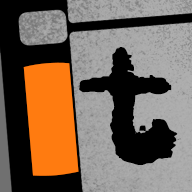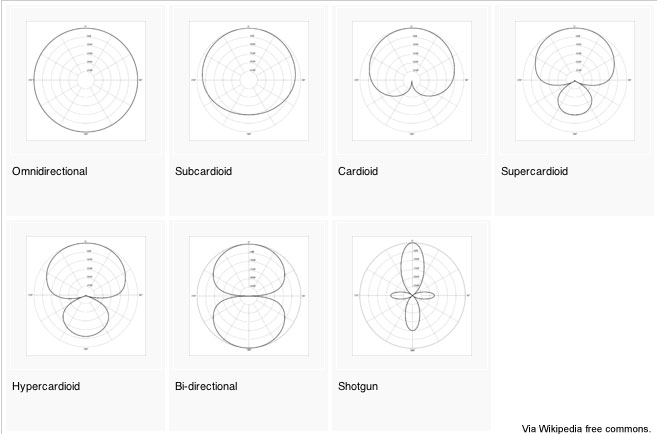A shotgun is good for outdoors, cause it does a better job of blocking out unwanted sounds. But you can still hear the sounds in the background. As long as the dialogue is still loud, and clear, is this acceptable? I mean the background sounds are recorded off axis as well. But they are used outdoors, instead of ADR, so I am assuming it is.
-
 ✅ Technical and creative solutions for your film.
✅ Technical and creative solutions for your film.
✅ Screenplay formatting help, plot and story guidance.
✅ A respectful community of professionals and newbies.
✅ Network with composers, editors, cast, crew, and more!
🎬 IndieTalk - Filmmaking and Screenwriting help site and community.
By filmmakers, for filmmakers since 2003
You are using an out of date browser. It may not display this or other websites correctly.
You should upgrade or use an alternative browser.
You should upgrade or use an alternative browser.
sound Question about using a shotgun outdoors.
- Thread starter harmonica44
- Start date
There is no way to completely eliminate the ambient background sounds or ambient reflections recorded on set, whether indoors or outdoors.
A shotgun mic has (or should have) terrific off-axis rejection. If it is used in a noisy environment outdoors it will pick up a lot of the ambient sound. The skill with which a shotgun mic is aimed will reduce, but never eliminate, the amount of ambient sound present in the production dialog tracks. However, since the source of the ambient sounds can (most times) be seen it can be "buried" in a carefully constructed sonic ambient background during audio post production. There is also the option of using dialog from alt/unused production sound dialog (close-ups and two shots, etc.) where the ambient sound from the outdoor set is less prevalent, and judicious use of noise reduction can further reduce the amount of ambient background noise recorded during production.
If a shotgun mic is aimed with skill, and the set is properly prepared, the reflections that are so prominent in indoor sets can also be significantly reduced, but never entirely eliminated. And the dialog editing process still plays an important role, substituting the dialog from close-ups and two shots for the dialog in wide shots.
As I have mentioned with boring frequency, it is the skill with which the tools are used that ultimately makes the difference. If the mic is properly aimed, and if the dialog is carefully edited, and if the ambient sound bed is created skillfully, and if noise reduction is used properly, the ambient sound recorded on the set with the production dialog will be controlled, quite seamless and unnoticeable to the average member of the audience.
A shotgun mic has (or should have) terrific off-axis rejection. If it is used in a noisy environment outdoors it will pick up a lot of the ambient sound. The skill with which a shotgun mic is aimed will reduce, but never eliminate, the amount of ambient sound present in the production dialog tracks. However, since the source of the ambient sounds can (most times) be seen it can be "buried" in a carefully constructed sonic ambient background during audio post production. There is also the option of using dialog from alt/unused production sound dialog (close-ups and two shots, etc.) where the ambient sound from the outdoor set is less prevalent, and judicious use of noise reduction can further reduce the amount of ambient background noise recorded during production.
If a shotgun mic is aimed with skill, and the set is properly prepared, the reflections that are so prominent in indoor sets can also be significantly reduced, but never entirely eliminated. And the dialog editing process still plays an important role, substituting the dialog from close-ups and two shots for the dialog in wide shots.
As I have mentioned with boring frequency, it is the skill with which the tools are used that ultimately makes the difference. If the mic is properly aimed, and if the dialog is carefully edited, and if the ambient sound bed is created skillfully, and if noise reduction is used properly, the ambient sound recorded on the set with the production dialog will be controlled, quite seamless and unnoticeable to the average member of the audience.
just make sure you don't shoot in the direction of another person, and always make sure the safety is on--- oh wait, you meant a shotgun mic.
This is precisely what I was thinking when I opened the thread and was curious about why someone would perhaps use a shotgun indoors
This is precisely what I was thinking when I opened the thread and was curious about why someone would perhaps use a shotgun indoors
For crew motivation, obviously.
For crew motivation, obviously.
hahaha! Funniest thing I've ever read on here!
(Besides my own witty remarks, of course
 )
)I advise that limited crew filmmakers (I've done this) take a few hours to walk around with a shotgun on a boom and just wear headphones for a while. Learn what pointing the mic in different directions does... bring a friend to read a book out loud. Boom them from different angles... treat your Mic the same way you would a new camera... point it at everything in the room and twiddle the knobs. This is the best way to learn where to aim it... especially if you have to instruct others how to do it once you hit set. It helps to actually "know" what to ask of them.
Take just as much time learning it as you would your camera. I know the audio guys here say it's half the experience, but I'd still argue that sound is more important than the image as it can hide problems in the image and edit. Dialog recording is the backbone of what we're doing, it's the first fundamental step if you have actors speaking words in your film at all. Learn to get that part right.
Take just as much time learning it as you would your camera. I know the audio guys here say it's half the experience, but I'd still argue that sound is more important than the image as it can hide problems in the image and edit. Dialog recording is the backbone of what we're doing, it's the first fundamental step if you have actors speaking words in your film at all. Learn to get that part right.
If you dont have isolating headphones.. try your fav ear buds with industrial hearing protection (hear muffs for construction) ...for Knightly's exercise above...
That is a good exercise.
Also, with the shotgun 18" from the speaker's mouth you should be able to have the gain at a level that while the environmental sounds are certainly there they are well in the background.
Also, with the shotgun 18" from the speaker's mouth you should be able to have the gain at a level that while the environmental sounds are certainly there they are well in the background.

"Yes", you will pick up some noise behind the mic + a little to the side.
The pick up is MOSTLY in front of the shotgun mic, not EXCLUSIVELY.
http://www.lennonbus.org/index.php?/blog/posts/infoblog_-_microphone_pickup_patterns1/
Okay thanks. Out of all those types of mic patterns, what would you use a subcardioid for? It seems in between a cardioid, and a hyper, but what purpose would you need an in between pattern for?
I advise that limited crew filmmakers (I've done this) take a few hours to walk around with a shotgun on a boom and just wear headphones for a while. Learn what pointing the mic in different directions does... bring a friend to read a book out loud. Boom them from different angles... treat your Mic the same way you would a new camera... point it at everything in the room and twiddle the knobs. This is the best way to learn where to aim it... especially if you have to instruct others how to do it once you hit set. It helps to actually "know" what to ask of them.
Take just as much time learning it as you would your camera. I know the audio guys here say it's half the experience, but I'd still argue that sound is more important than the image as it can hide problems in the image and edit. Dialog recording is the backbone of what we're doing, it's the first fundamental step if you have actors speaking words in your film at all. Learn to get that part right.
Good advice!
This gives me a flashback of my first day on set ever in 2001.
We were shooting outside and I was doing sound, since I already had experience with recording music.
I walked around listening in all directions: the road, the sky, the meadows.
What could I hear? When did I catch wind? How loud are airplanes or traffic?

